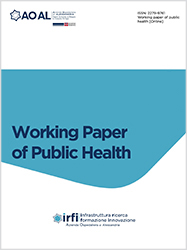Extracorporeal photopheresis (ECP): in vitro assessment of procedure quality

All claims expressed in this article are solely those of the authors and do not necessarily represent those of their affiliated organizations, or those of the publisher, the editors and the reviewers. Any product that may be evaluated in this article or claim that may be made by its manufacturer is not guaranteed or endorsed by the publisher.
Objectives: The purpose of this work was to validate the procedure of extracorporeal photopheresis (ECP) offline after the addition of 8- MOP and UV-A (PUVA) irradiation by carrying out functional tests as recommended by the GITMO/SIdEM guidelines. There is currently no general agreement on the protocol to be adopted for the biological validation of the ECP; in fact, it is required that the test needs to be reproducible, reliable and standardisable. So, the protocol needs to be replicated in every processing laboratory.
Methods: in absence of guidelines and evidence to support ECP, we have chosen to monitor cellular apoptosis induced by 8-MPO and UV-A (PUVA) irradiation, after 1 h, 48 h, and 96 h, using double marking with FITC-Annexine V and 7-AAD and consequent cytofluorimetric evaluation.
Results: the functional tests utilized reproduce in vitro the 8-MOP activation effects. Our data suggest that the use of double staining with FITC-Annexine V and 7-AAD and subsequent cytofluorimetric evaluation may represent a reliable and reproducible method for ECP biological validation.
Conclusions: the work allowed us to review our ECP validation procedure. We will adopt as functional test the double marking FITC- Annex V and 7-AAD and reading in cytofluorimetry at +48h post PUVA. The test needs to be performed on each enlisted patient, during the first two procedures, with each modification of the set used and at each 8-MOP batch change. We do not know what is the impact of the ECP procedure in terms of clinical efficacy or if reinfused cells are biologically inactivated or not active in the patient with GvHD. Clinical follow-up must remain the key parameter for evaluating the response to ECP treatment because even qualified therapy becomes clinically irrelevant in a patient not responding to treatment.
PAGEPress has chosen to apply the Creative Commons Attribution NonCommercial 4.0 International License (CC BY-NC 4.0) to all manuscripts to be published.

 https://doi.org/10.4081/wpph.2021.9456
https://doi.org/10.4081/wpph.2021.9456




